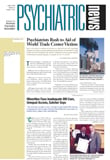Health and Human Services Secretary Tommy Thompson insisted at a Senate committee hearing in early September that despite media reports to the contrary, at least 64 embryonic stem-cell lines meet the president’s criteria of having been created before August 9, when President George W. Bush announced his decision on federally funded stem-cell research.
When pressed by members of the Senate Health, Education, Labor, and Pensions (HELP) Committee, Thompson conceded that only about 25 of the 64 cell lines are developed enough to be of use to researchers in the near future.
Thompson was grilled in August by the Senate committee about the implications of the president’s announcement allowing federal funding for research on stem-cell lines derived from human embryos before the date of his announcement.
Thompson reassured committee members that researchers can work with a limited number of stem-cell lines. “University of Wisconsin scientist James Thomson was the first to isolate human embryonic stem cells and has done nearly all his research on just two stem-cell lines,” said Thompson.
HELP committee chair Sen. Edward Kennedy (D-Mass.) praised Bush for opening the funding door to stem-cell research and recognizing that embryonic stem cells may be valuable in treating and curing a range of diseases including Parkinson’s, Alzheimer’s, and certain forms of cancer.
But Kennedy and other committee members questioned whether Bush opened the door wide enough when he chose to limit the supply of stem-cell lines to those in existence prior to August 9.
Deadline Arbitrary
Sen. Arlen Specter (R-Pa.), whose bill, S 723, would allow researchers unlimited access to discarded or destroyed human embryos (Psychiatric News, September 7), said the deadline was arbitrary given that the president made his decision without all the facts.
“We know very little about the quality of the existing stem-cell lines, their owners, and their willingness to share, and what the effects are of contamination with mouse cells. We will need to conduct an independent review of all the facts,” said Specter. He and Sen. Tom Harkin (D-Iowa) conducted two additional hearings on stem-cell research last month.
Thompson was clear that the president has no intention of reconsidering the August 9 cutoff date. The HHS secretary repeatedly told the senators that questions about the quantity and quality of stem-cell lines will be answered only through conducting basic research.
Thompson added that a registry of stem-cell lines that meet the president’s criteria will be available on the National Institutes of Health (NIH) Web site sometime this month. To qualify, the cells must have been taken from human embryos created for reproductive purposes and destroyed before August 9. The donors must have provided informed consent and received no financial incentives for donating embryos, according to Thompson.
The NIH registry will provide information on how to contact the owners, which are 10 companies or laboratories in Sweden, Israel, India, Australia, and the United States, said Thompson.
The NIH may also provide information in the future about how the stem cells were derived, the culture conditions, growth characteristics, and quality assurance data, said Thompson.
Proprietary Issues
Douglas Melton, Ph.D., chair of the department of molecular and cellular biology at Harvard University, testified at the Senate HELP committee hearing last month that he is concerned that the NIH plans to require scientists to negotiate directly with the owners to obtain access to their cell lines.
“Most of the entities that have isolated the 60-plus human embryonic stem-cell lines are companies with proprietary and commercial interests. In addition, there are relevant patents on some of the cells that may further restrict their distribution and use,” said Melton.
Thompson reassured members of the Senate HELP committee that HHS was tackling proprietary issues. He announced that an agreement was signed in September between the NIH and the WiCell Research Institute licensed by the Wisconsin Alumni Research Foundation to distribute stem cells. The agreement gives NIH-funded researchers access to WiCell’s five stem-cell lines, said Thompson.
“Researchers can access these lines for their own research and freely publish the results. The agreement also allows the NIH to retain its ownership of any intellectual property that might arise from its research on these cell lines,” said Thompson.
“This is a groundbreaking agreement that will hopefully serve as a model for making the other lines available,” added Thompson. He said that the other nine entities have indicated their interest to the NIH in sharing their stem cell lines but have not entered into any written agreements. “We will continue to work with all stem-cell owners to address proprietary issues,” promised Thompson.
Kennedy also complained that the president’s August 9 deadline precludes scientists from developing alternatives to growing human embryos in cultures with mouse cells. He noted that a federal guideline prohibits the testing in humans of substances mixed with animal cells because of possible infection or rejection.
Thompson confirmed that all existing stem-cell lines have been grown with mouse nutrients. He reassured Kennedy and committee members that the Food and Drug Administration is willing to approve clinical trials in humans of substances mixed with animal cells and has already done so in investigations of new drugs. He disagreed with Harkin that the human cells were “contaminated” by interacting with the mouse cells but didn’t elaborate.
The Human Embryonic Stem Cell Registry will be available sometime in October on the NIH web site at www.nih.gov. ▪
